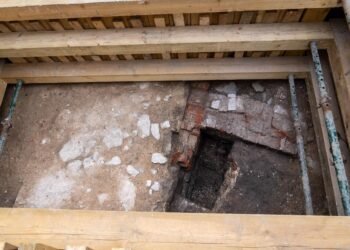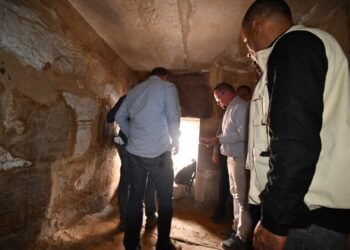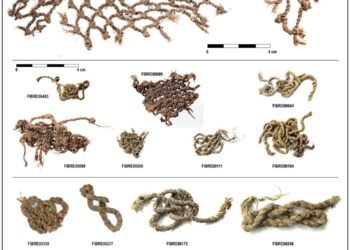A recent excavation by a joint Egyptian-German archaeological mission in the Dahshur archaeological area has led to the discovery of a significant mastaba tomb dating back to Egypt’s Old Kingdom period. The tomb, constructed from mud bricks, was found partially buried in the sandy terrain near the iconic pyramids that dominate the landscape of the region.
The discovery sheds light on the social and political structure of ancient Egyptian society, remarked Hisham El-Leithy, Acting Secretary-General of the Supreme Council of Antiquities. The mastaba, adorned with intricately painted decorations, features scenes such as grain threshing, river navigation, bustling marketplaces, and ceremonial offerings.
The tomb belonged to a man named Seneb-Neb-Af and his wife Idet, according to inscriptions found within. Seneb-Neb-Af held various administrative roles in the royal palace, including the administration of tenants, while Idet served as a Priestess of Hathor and Lady of the Sycamore. The tomb’s exquisite artwork distinguishes it from others in the Dahshur Necropolis, noted Stephan Seidlmayer, leader of the excavation team from the German Archaeological Institute.
Dating to approximately 2300 BCE or earlier, the mastaba adds to the rich archaeological treasure of Dahshur, known for its pyramid cemeteries dating back to the Old Kingdom. The region, situated south of Giza’s Saqqara, boasts several notable landmarks, including the Red Pyramid and the Bent Pyramid, attributed to King Seneferu, father of King Khufu.
Dr. Stefan Seidlmayer, former director of the German Archaeological Institute and head of the mission said that further excavations and documentation work will continue to unveil more secrets hidden within the tomb and its surroundings.
The mission, which has been active in Dahshur since 1976, has recently shifted its focus towards exploring the tombs of prominent statesmen, priests, and administrators from ancient Egyptian history.
The Dahshur archaeological site, is part of the ancient Memphis UNESCO World Heritage Site, featuring five pyramids erected between 2575 BCE and 1756 BCE.






















